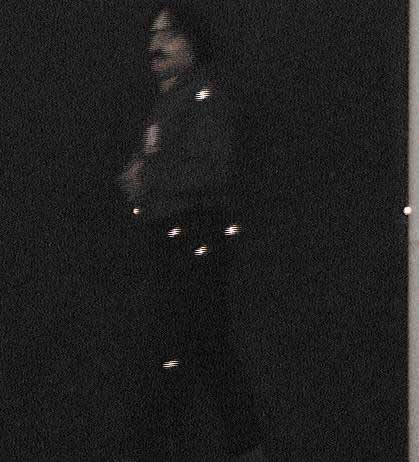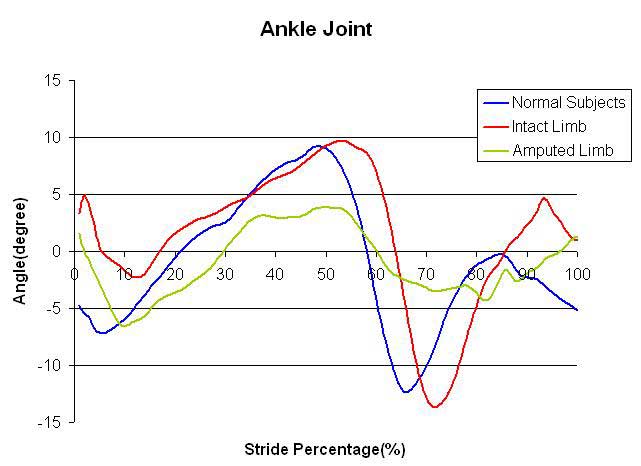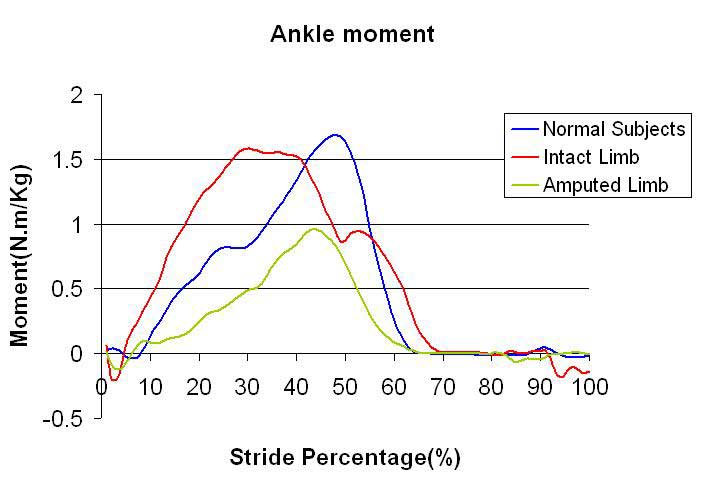The resultant joint moments of amputee limb and intact side of 4 above knee and 1 disarticulation knee amputee ، and 5 normal subjects were studied. Samples were selected using simple sampling method. Joint moments were obtained using kinetics data (from a Force plate) and kinematics data (from a digital video camera). Length strides, length steps, stride duration, step speed and duration of stance phase, were separately calculated using 2D coordinates of second metatarsal markers in the video films. This parameters were deduced as follow: peaks of ankle, knee and hip joint moments, happening stride percentage of each of them, average of each of joint moments, and application times of moments greater than average moment for each joint in the three studying groups (normal subjects, amputee limb and normal side of amputee subjects). Statistical comparison between normal subjects and limbs of amputee subjects and statistical comparison between two limbs of amputee subjects was conducted. A significant difference was observed between time- distance, variables of normal subjects and intact limb of amputee subjects. For the joint moments, we observed longer application times of moments greater than average in the ankle and hip joints, and larger peaks of knee moment in intact side of amputee subjects. These results indicate larger loading on intact side of amputee subjects compared with normal subjects and amputee limb. However, the small difference may indicate that body adapt its motion with amputation.


